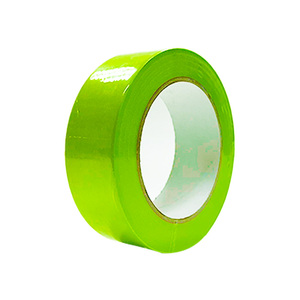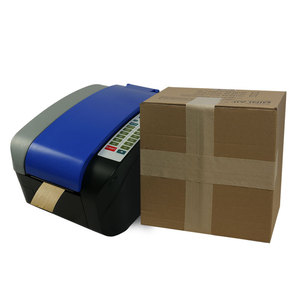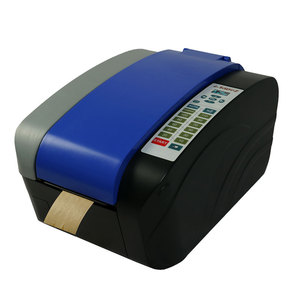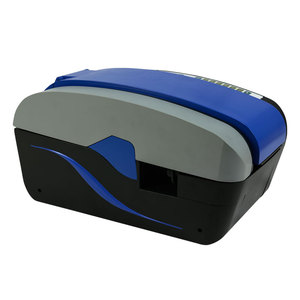
All categories
Featured selections
Trade Assurance
Buyer Central
Help Center
Get the app
Become a supplier

(2315 products available)

























Market Overview: The global market for masking tape manufacturing machines is on a steady growth trajectory, reflecting the broader advancements in packaging machinery. As of 2024, the packaging machinery manufacturing industry in the U.S. is projected to expand at a CAGR of 1.9%, reaching approximately $9.4 billion by 2025, according to IBISWorld. This growth is driven by rising demand for packaging solutions across various sectors, particularly in food and beverages, pharmaceuticals, and consumer goods. The increasing focus on automation and efficiency in manufacturing processes is further propelling the adoption of advanced masking tape manufacturing machines, which are essential for producing adhesive tapes that cater to diverse applications such as construction, automotive, and electronics.
Industry Insights: The market dynamics are influenced by several factors, including technological innovations and shifts in consumer behavior. A significant trend is the growing preference for sustainable and eco-friendly packaging solutions, which drives manufacturers to invest in advanced machinery that can produce biodegradable tapes. According to Research and Markets, the packaging tape printing market is expected to see a robust CAGR of 7.1%, reaching an estimated $511.42 million by 2030, underscoring the importance of effective branding and product identification. Major players in the masking tape manufacturing machine sector are focusing on enhancing operational efficiency and product quality through automation and smart manufacturing technologies. Additionally, challenges such as fluctuating raw material prices and stringent regulatory standards necessitate that manufacturers adopt innovative strategies to maintain competitiveness in this evolving landscape.
There are two main types of masking tape manufacturing machines:
Fully Automated Production Line
A fully automated production line for making masking tape is an all-in-one machine that can do every step of the process by itself. It includes the important parts, such as a core feeding system, paper unwinding and web guiding, adhesive coating unit, drying system, embossing unit, laminating unit, cutting system, and finally, the packaging system. Each part of the machine works on its own; no one needs to tell it what to do. This makes it so that more masking tape can be made in less time and also with better quality. Even though this whole machine costs a lot at first, the money spent will be worth it because of how quickly and well it can produce masking tape.
Semi-Automated Production Line
A semi-automated production line for making masking tape requires some manual labor to help with certain tasks. Compared to fully automated lines, these partially automated lines are less expensive to buy and operate, requiring only a few workers to be present while still producing a decent amount of product. The operator will have to do some easy jobs, such as loading the paper onto the roll and unloading the finished rolls of tape, but most of the work will be done by the machine itself. This sort of production line is good for smaller businesses that do not need to make as much tape as big companies with fully automated systems.
The primary components of a masking tape-making machine include a raw material feed system, cutting and shaping components, an adhesive application system, a drying system, a winding mechanism, and control and quality assurance features.
With the increasing demand for adhesive tape products in various sectors, the market for masking tape manufacturing machines is expected to grow.
Rapid Tape Production:
Masking tape production machines enable companies to swiftly manufacture large quantities of masking tape to meet growing market demand. These machines streamline production processes, helping companies to save time and increase efficiency.
Wholesale Supply:
Masking tape manufacturing machines produce large quantities of masking tape, which provides a steady supply of products for wholesale tape distributors and retailers. These distributors and retailers can use the production machines' masking tape to meet the needs of their customers' businesses.
OEM Service:
Masking tape production machines offer businesses the opportunity to provide original equipment manufacturing (OEM) services for custom-branded masking tape. These companies can utilize the production machine to produce masking tape with their own brand name and design, which creates unique products for their customers.
High Demand Industries:
The production of masking tape with masking tape-making machines serves many high-demand industries and sectors that utilize masking tape. For example, the production machine can be used to produce specialized masking tape for the construction, automotive, design/painting, and other industries, thus meeting the specific needs of these industries.
Export Markets:
Masking tape manufacturing machines provide a wide range of export markets. Businesses can export the masking tape produced by the production machine to overseas markets, which accommodates international customers' needs and preferences.
Customized Products:
Production machines for masking tape can produce customized products, such as different widths, lengths, colors, and patterns of masking tape. This variety of options allows businesses to offer more choices to their customers and meet their customers' specific needs.
Brand Differentiation:
Businesses can use masking tape production machines to produce unique masking tape products that differentiate their brand from the competition. For example, they can use the production machines to make masking tape with distinctive colors, patterns, or features, which enhances their brand image and recognition.
Consider the following aspects when choosing the masking tape production line for sale:
Business Requirements Analysis
Consider the scale of production and select the machine that meets business needs. Also, consider the budget and choose a machine with a cost within an affordable range.
Core Functions
Focus on key functions, including tape types, customization options, production efficiency, and quality control. Also, consider the core functions required for specific business needs and select the machine that meets those requirements.
Operating Convenience
Consider the operating convenience of the machine, such as an intuitive interface, simple and easy-to-understand operating procedures, and the maintenance requirement. Choosing a machine with operating convenience can help reduce training costs and enhance operating efficiency.
Product Quality
Consider the quality of the product produced by the machine, such as durability, appearance, and precision. Select the machine that is capable of producing products of high quality to ensure customer satisfaction and business success.
Safety and Environmental Protection
Pay attention to a machine's safety and environmental protection performance, such as compliance with safety standards, the adoption of environmental-friendly materials, and energy-saving functions. Selecting a machine with good safety and environmental protection performance can reduce operating risks and social responsibilities.
Q1. What are the key components of a masking tape manufacturing machine?
A1. core making unit, adhesive coating unit, film/plaid unwind unit, drying/curing unit, slitting/re-winding unit, control system, and electric parts.
Q2. What types of adhesive coating methods are used in masking tape manufacturing machines?
A2. There are several methods of adhesive coating in masking tape manufacturing machines, including kiss coating, reverse roll coating, and hot melt coating. The exact method will depend on the machine model and manufacturer.
Q3. What is the production capacity of a masking tape manufacturing machine?
A3. The production capacity depends on the machine's specifications and the size of the tape being produced. Most machines can produce between 30-120m of tape per minute.
Q4. What is the voltage requirement for a masking tape manufacturing machine?
A4. The voltage requirement will vary depending on the machine's capacity and the country where it is being used. Check with the manufacturer to determine the exact voltage requirement.